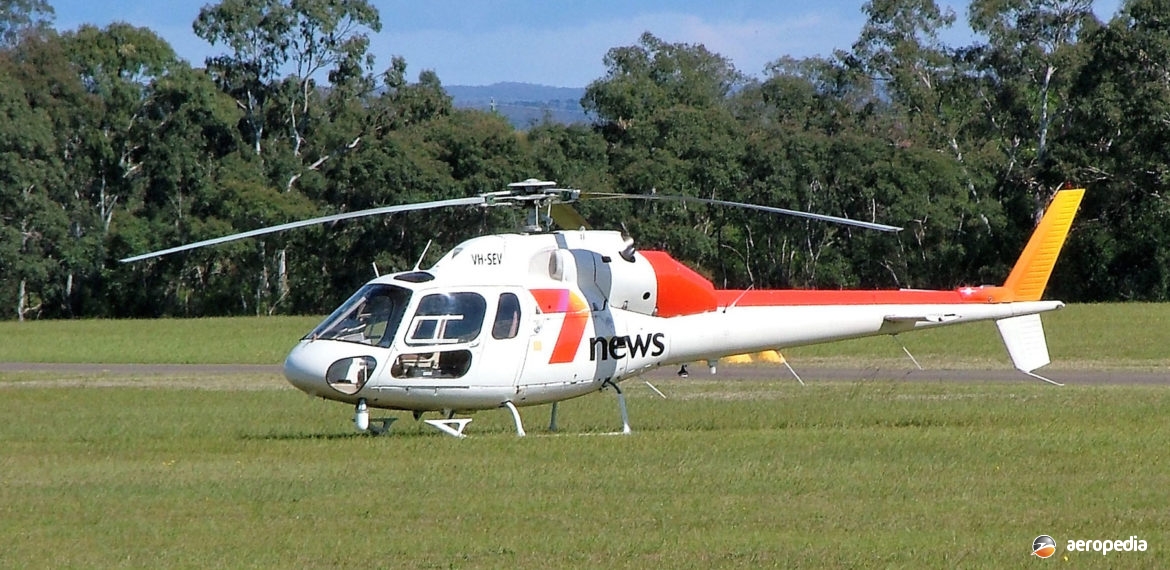Photograph:
Aerospatiale AS 355F1 Ecureuil VH-SEV2 (c/n 5272) at Camden, NSW (David C Eyre)
Country of origin:
France
Description:
Twin-engine light utility helicopter
Power Plant:
Two 313 kw (420 shp) Allison 250-C20F turboshafts
Specifications:
- Rotor diameter: 10.69 m (2,877 ft)
- Length overall: 12.94 m (42 ft 6 in)
- Height: 3.14 m (10 ft 4 in)
- Max cruising speed: 224 km/h (139 mph)
- Initial rate of climb: 390 m/min (1,280 ft/min)
- Hovering ceiling in ground effect: 3,399 m (11,150 ft)
- Range with max fuel no reserves: (703 km) 437 miles
- Empty weight: 1,305 kg (2,877 lb)
- Loaded weight: 2,540 kg (5,600 lb)
History:
The AS 355 was a development of the AS 350 series with twin engines aimed at the police, ambulance, EMS and media roles seating six persons. More than 650 examples have been produced. Development of the Twin Squirrel, as it became known, was commenced shortly after the AS 350 series entered production.
The prototype fitted with two Allison 250-C20F turboshafts flew for the first time on 28 September 1979, this new model having the engines supplying power to the transmission and main rotor blades via a common gearbox. One of the features of the type was the Starflex main rotor hub, which had a virtually maintenance-free section. The central component was a ‘star’ built of glass cloth and epoxy resin. The head only contained 70 parts compared to the 377 in the Alouette, and weight was reduced by 45%. Accommodation was available for six; or two stretchers, a doctor and an in-flight attendant; or freight. A military version known as the AS 355M was delivered to the French Armee de l’Air and other military operators.
In 1982 the AS 355E was replaced on the production line by the AS 355F which had new wider chord main rotor blades and an increase in the max take-off weight. The AS 355F1 followed in 1984, and the AS355F2 in December 1985, with even greater max take-off weight. Subsequently the AS 355N appeared, this being fitted with two 303 kw (406 shp) Turbomeca TM 319 1A Arrius turboshafts.
In the United States the type has been marketed as the TwinStar and the military as the Fennec.
Production of the series concluded in 2016, a total of 600 examples being delivered since production commenced in 1979. More than a dozen have been registered in Australasia over the years.

